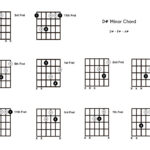As you may have discovered, the guitar is known as an octave transposing instrument. This means that the notes produced by a guitar sound one octave lower than they are written on the sheet music. When you read music written for non-transposing instruments like the piano, violin, or cello and play it on the guitar, your guitar will produce sounds an octave lower than those instruments playing the same written notes.
A common question from guitarists is how to determine if a piece of music is already transposed for guitar. Ideally, a composer or arranger should always be aware of the guitar’s transposing nature, just as they should know about transposition for instruments like Bb trumpets or clarinets. When you receive a part labeled “Guitar,” it is generally safe to assume that the music is already transposed. Sometimes, a small “8” below the G clef (treble clef) is used to explicitly indicate a transposed part, but this isn’t always the case.
Unfortunately, unless you can directly consult with the composer or arranger, there’s no absolute way to guarantee if a part has been transposed. The best approach is to play the music and listen to whether it sounds within a typical and comfortable range for the guitar. Also, consider how well it blends with other instruments playing alongside you. If the guitar part seems unusually low or muddy compared to the ensemble, it might not be transposed correctly.
It’s worth noting a specific situation often encountered in pop and rock music. If you are given a “master rhythm” part, which is common in these genres, and it includes written melody lines, you will likely need to play those melody lines an octave higher than written if you intend to play in unison with instruments like piano or keyboards. Master rhythm parts are often written in concert pitch, meaning they are not transposed for any instrument.
Finally, regarding the tuning standard A=440, in standard treble clef notation (for non-transposing instruments), A440 is the A located in the second space from the bottom of the staff. However, on Guitar Sheet Music (which is transposed), A=440 is represented by the A one ledger line above the staff. This is because the written A above the staff on guitar music corresponds to the A in the second space on piano music, and the guitar then transposes it down an octave.

